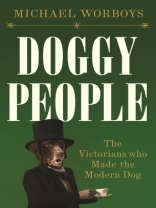We know that there were dogs in Victorian Britain, but who were the ‘Doggy People’ who kept them, bred them, showed them, worked with them and cared for them?
Chapter by chapter, this book reveals the varied and often eccentric lives of the Victorians who helped define dogs as we know them today. The cast runs from the very pinnacle of society, Queen Victoria, to near the bottom with Jemmy Shaw, a publican, boxer, promoter of dog-fights and rat-killing. The others include an artist, aristocrats, authors, a clergyman, doctors, a dog-dealer, a feminist, journalists, landowners, millionaires, philanthropists, politicians, scientists, a stockbroker, veterinarians, and a showman – none other their Charles Cruft.
Looking at the invention and meaning of new breeds such as poodles, collies, Jack Russells, and borzois amongst others, we see how the Victorians thought about pets, sports, dog shows and animal rights.
Jadual kandungan
Introduction
High society, low society
1. Queen Victoria | Family pets
2. Bill George | King of the Canine Castle
3. Jemmy Shaw | The Fancy
4. Duchess of Newcastle | Borzois and Fox Terriers
Celebrities and millionaires
5. Jack Russell | Terriers
6. Edwin Landseer | Canine characters
7. Harry Panmure Gordon and J. P. Morgan| Collies
8. Alice Stennard Robinson | Ladies Kennel Association
Sportsmen and showmen
9. John Henry Walsh (‘Stonehenge’) | Breed and breeds
10. Richard Lloyd Price | Sheepdog trials
11. John Henry Salter | Field trials
12. Charles Cruft | Dog shows
Doctors and scientists
13. Delabere Blaine and William Youatt | Dog doctors
14. Charles Darwin | Evolution and emotions
15. Gordon Stables | Canine care and dog tales
16. Everett Millais | Basset Hounds and breeding
Campaigners and politicians
17. Mary Tealby | Dogs’ homes
18. Frances Power Cobbe | Sentient creatures
19. John Cumming Macdona | St Bernards
20. Sewallis Shirley | The Kennel Club
Afterword – Pedigree chums
Index
Mengenai Pengarang
Michael Worboys is an Emeritus Professor in the Centre for the History of Science, Technology and Medicine (CHSTM) at the University of Manchester












